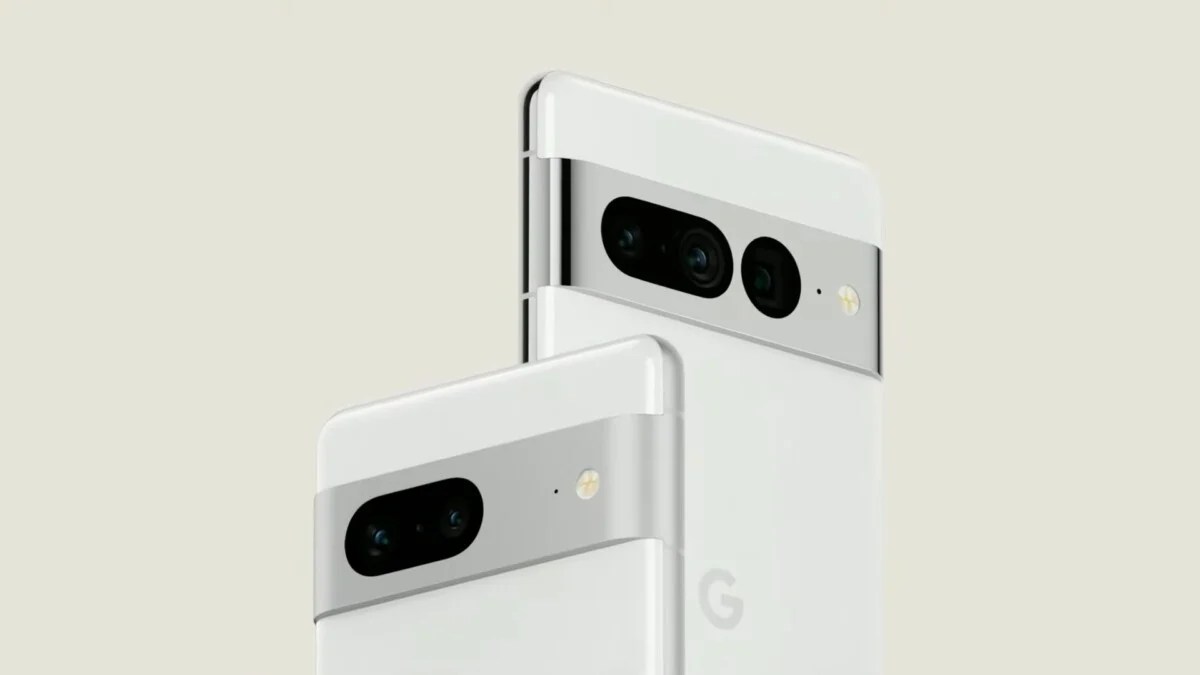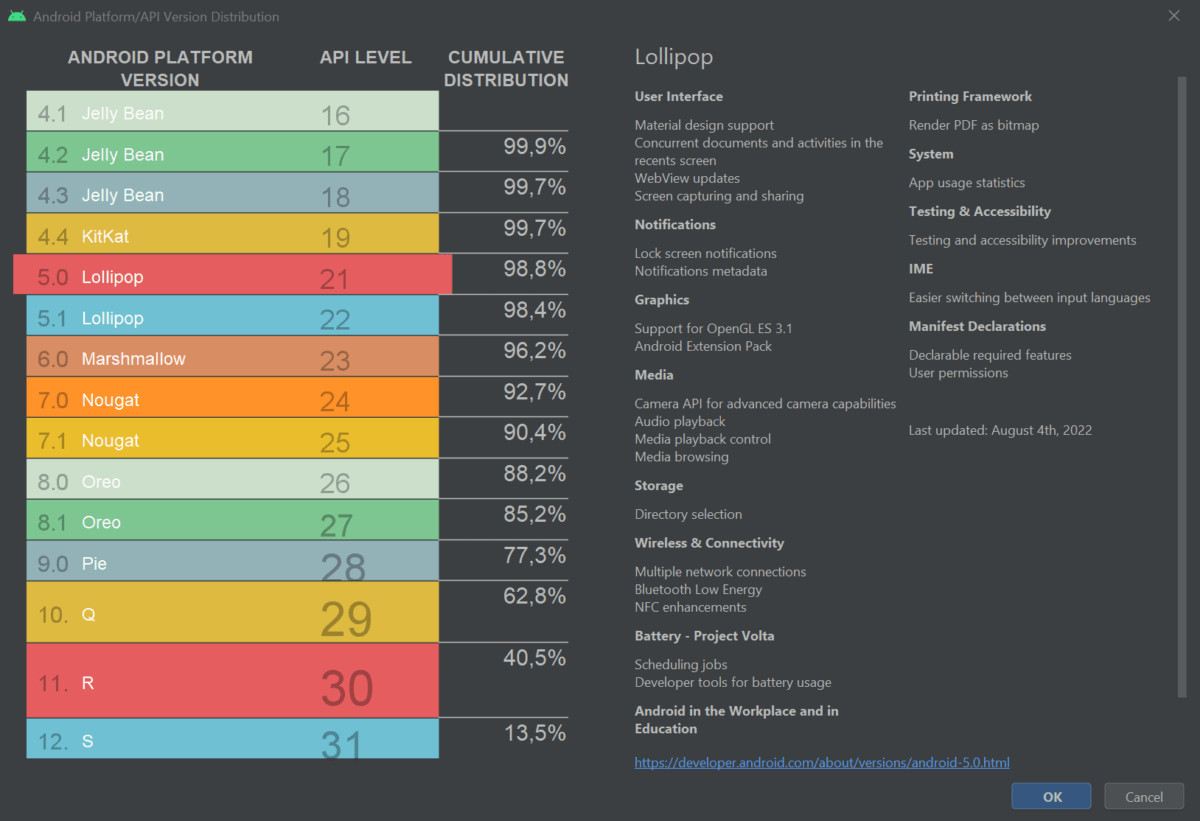Are you using the most popular version of Android? Here is the fragmentation of Google’s OS in 2022 to find out which of Android 12, Android 11 or Android 10 is the most deployed version in the world.
After Android 12, Google started rolling out Android 13 in its stable version. But the latter is still in an embryonic stage for the moment. On the other hand, it is a good opportunity to ask yourself which version of Android is the most used in 2022.
To answer this, let’s take a tour of Android Studio. Software that supports developers designing mobile applications for the OS powered by Google. An infographic is hidden in this tool and it is updated more or less regularly. Thanks to this source, we can know the fragmentation of Android.
Android 11: the most used version in 2022
The latest data shared by Google dates from August 4, 2022. Android 11 occupies first place with 26.7% of the park.

The podium is completed by Android 10 Q, second with 22% and Android 9 Pie, third with 14.3%.
| Android version | Android market share |
|---|---|
| Android 13T | no data yet |
| Android 12S | 13.5% |
| Android 11R | 27% |
| Android 10Q | 22.3% |
| Android 9 Pie | 14.5% |
| Android 8.1 Oreo | 7.9% |
| Android 8.0 Oreo | 3% |
| Android 7.1 Nougat | 2.2% |
| Android 7.0 Nougat | 2.3% |
| Android 6.0 Marshmallow | 3.5% |
| Android 5.1 Lollipop | 2.2% |
| Android 5.0 Lollipop | 0.4% |
| Android 4.4 Kit Kat | 0.9% |
| Android 4.3 Jelly Bean | 0% |
| Android 4.2 Jelly Bean | 0.2% |
| Android 4.1 Jelly Bean | 0.1% |
The problem with Android updates
The slow deployment of new versions of Android is often singled out. When comparing to the rapid updates made by Apple on iOS, there is indeed a huge gap.

This is partly explained by the fact that, when a new version of Android is made available by Google teams, other smartphone manufacturers using this OS must take the time to deploy it on each of their devices. This necessarily involves additional delays. Apple does not have this concern since it deploys its proprietary OS on its own iPhone.
A problem to be nuanced
If criticisms of Android’s fragmentation are often justified, they should also be tempered.
Home interfaces
Indeed, remember that a large number of Android devices benefit from in-house interfaces: One UI for Samsung, MIUI at Xiaomi, ColorOS on the Oppo side, etc.
The features offered by these interfaces are often not perfectly aligned with those deployed by Google on Android. Thus, it regularly happens that a manufacturer offers an option before it arrives on a major update of the operating system.
For example, many smartphones already took advantage of the dark mode or the screen recorder before Google integrated it by default on Android.
Application compatibility
Also note that the slow deployment of new versions of Android does not prevent applications from remaining compatible with older versions. Indeed, Android is designed so that developers can continue to run their apps on 90% of the park.
Most applications, as popular and continuously updated as they are, do not require an ultra-recent version of Android to operate. Spotify or TikTok thus require Android 5.0 at least, Android 8.0 for Facebook or Android 4.3 for Call of Duty Mobile.
The efforts of Google and manufacturers
Finally, note that Google is aware of the problem and is carrying out several projects to accelerate the deployment of the latest major Android updates. We thus think of the Treble project, which is very promising on paper, but whose results are not yet really felt. Efforts must therefore be intensified, but the will is there.
Beyond that, in recent years, driven by an eco-responsible discourse, brands want to show their commitment to offering devices that last longer. While Android smartphones have long been accustomed to only receiving two major Android updates, things are changing slowly but surely.

On its Pixels, Google provides a long software follow-up. Software tracking that doesn’t just result in major Android updates. The most important, finally, remains the security patches to be deployed regularly.
We can cite the example of Samsung, which provides four years of regular updates following the release of all its Galaxy smartphones – but only if they were released in 2019 or later.
How to know the fragmentation of Android?
To find out which Android versions are most used, you need to install Android Studio. After this step, you will need to open the software and launch a new project by clicking on “New Project”.
You will then need to choose a template. Here, just select any one by double clicking on it. You will then come across a window where you will have to look for the clickable phrase “Help me choose”.

A click on this link takes you to the infographic that Google makes available to developers to estimate the number of devices that their applications will be able to reach.
To follow us, we invite you to download our Android and iOS application. You can read our articles, files, and watch our latest YouTube videos.
